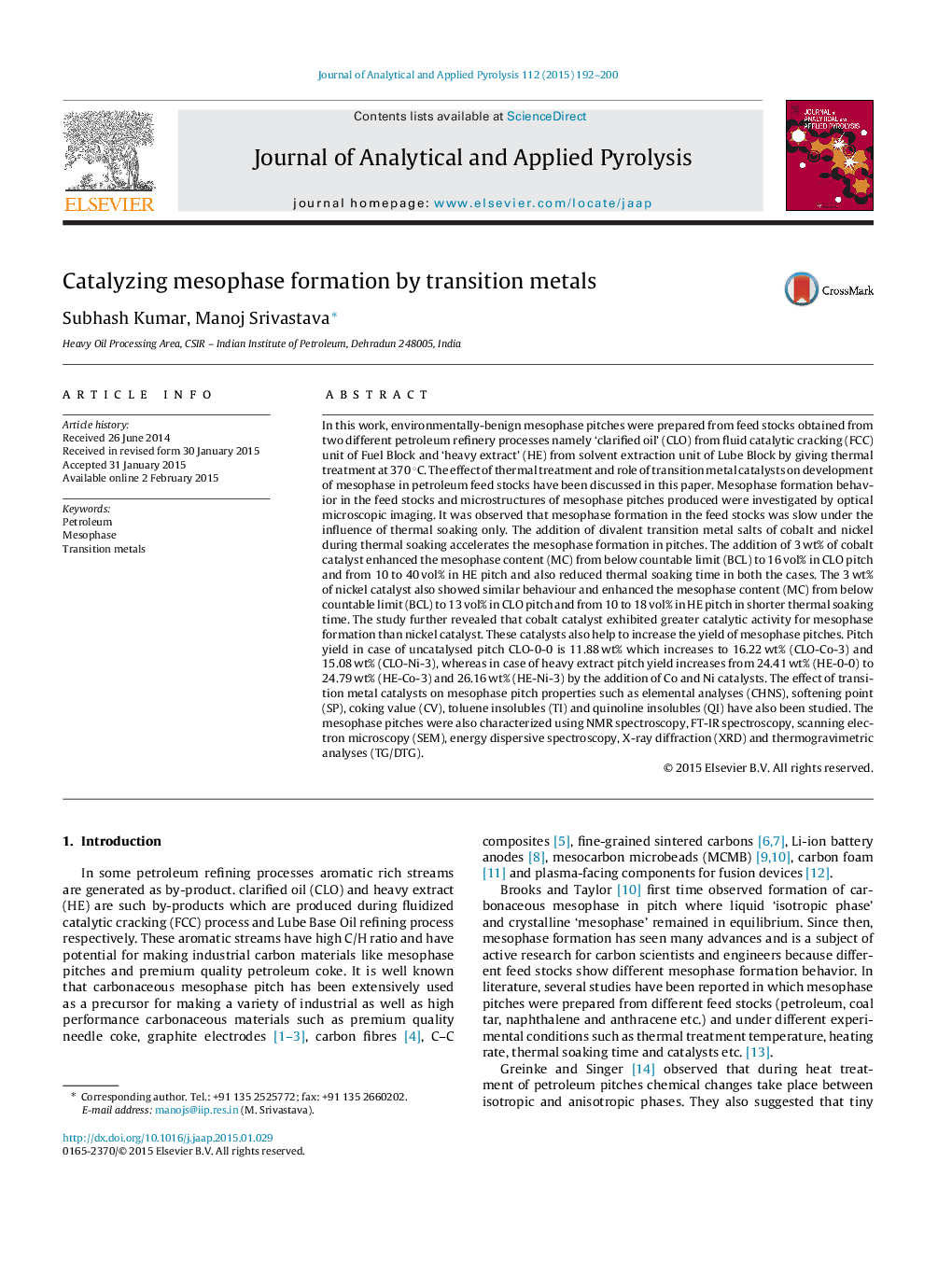| Article ID | Journal | Published Year | Pages | File Type |
|---|---|---|---|---|
| 1197233 | Journal of Analytical and Applied Pyrolysis | 2015 | 9 Pages |
•Mesophase pitch having 40% MC is a precursor material in the production of carbon fibres and also used as a precursor for making needle coke.•The process of mesophase transformation and increment of physico-chemical properties of mesophase pitches reveals that Co has higher catalytic activity than Ni.•Transition metal catalysts do not react chemically with polyaromatic pitch molecules but only influence the growth of mesophase physically.•Catalyst recovery from mesophase pitches is also possible.
In this work, environmentally-benign mesophase pitches were prepared from feed stocks obtained from two different petroleum refinery processes namely ‘clarified oil’ (CLO) from fluid catalytic cracking (FCC) unit of Fuel Block and ‘heavy extract’ (HE) from solvent extraction unit of Lube Block by giving thermal treatment at 370 °C. The effect of thermal treatment and role of transition metal catalysts on development of mesophase in petroleum feed stocks have been discussed in this paper. Mesophase formation behavior in the feed stocks and microstructures of mesophase pitches produced were investigated by optical microscopic imaging. It was observed that mesophase formation in the feed stocks was slow under the influence of thermal soaking only. The addition of divalent transition metal salts of cobalt and nickel during thermal soaking accelerates the mesophase formation in pitches. The addition of 3 wt% of cobalt catalyst enhanced the mesophase content (MC) from below countable limit (BCL) to 16 vol% in CLO pitch and from 10 to 40 vol% in HE pitch and also reduced thermal soaking time in both the cases. The 3 wt% of nickel catalyst also showed similar behaviour and enhanced the mesophase content (MC) from below countable limit (BCL) to 13 vol% in CLO pitch and from 10 to 18 vol% in HE pitch in shorter thermal soaking time. The study further revealed that cobalt catalyst exhibited greater catalytic activity for mesophase formation than nickel catalyst. These catalysts also help to increase the yield of mesophase pitches. Pitch yield in case of uncatalysed pitch CLO-0-0 is 11.88 wt% which increases to 16.22 wt% (CLO-Co-3) and 15.08 wt% (CLO-Ni-3), whereas in case of heavy extract pitch yield increases from 24.41 wt% (HE-0-0) to 24.79 wt% (HE-Co-3) and 26.16 wt% (HE-Ni-3) by the addition of Co and Ni catalysts. The effect of transition metal catalysts on mesophase pitch properties such as elemental analyses (CHNS), softening point (SP), coking value (CV), toluene insolubles (TI) and quinoline insolubles (QI) have also been studied. The mesophase pitches were also characterized using NMR spectroscopy, FT-IR spectroscopy, scanning electron microscopy (SEM), energy dispersive spectroscopy, X-ray diffraction (XRD) and thermogravimetric analyses (TG/DTG).
